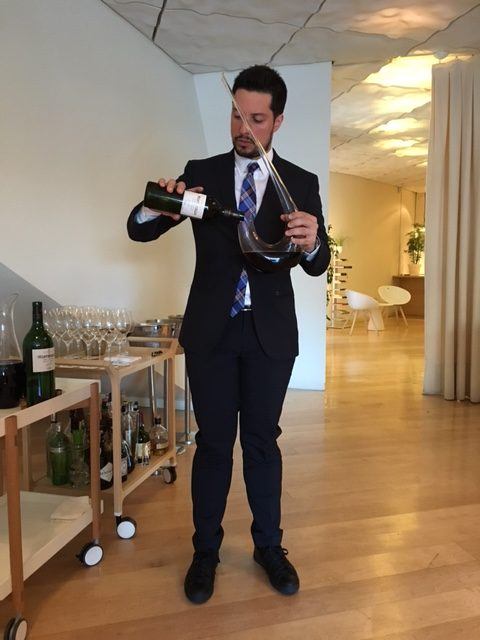Decanting wine, one of the things that people who are interested in learning more about the world of wine often ask us about.
When to do it, when not to, what it means and how to do it, are some of the key questions that come up. mentan.
Let’s start by saying that what you think of as decanting is often not the whole story, true decanting is more than just pouring wine into a decanter. Saying that, we are going to explain the different techniques.

Firstly, you should note that decanting wine and simply pouring wine into a jug or decanter are both methods of serving a wine that cause the contents of the bottle to be aerated more quickly.
But decanting wine, as well as the aforementioned oxygenation, has an additional objective, of separating the sediment or deposits from the wine itself.
These precipitations can appear due to the wine’s ageing in bottle, or because it was a wine that spent a long time macerating with the skins during the production process, for example in the case of natural wine, giving a large amount of colouring material, which, added to minimal clarification and filtration, will lead to the appearance of sediment caused by the mineral salts and tannins.
Best restaurants in Chamberí (Madrid) – Gourmet & Tips – Bodegas Montecillo
What is clear is that this sediment has no effect on the quality of the wine, but if it ends up in the glass, it can spoil the drinking experience or look somewhat unattractive.
In any case, to decant properly, it is necessary to have previously transported the wine very carefully, avoiding brusque movements, to stop the dregs from dispersing. So it is very important that, if you plan to decant a bottle, you stand it upright the day prior to serving it, to make sure the sediment moves down to the bottom.

Once at the table, light a candle (yes, a candle, this will allow us to see the particles to filter out in the neck of the bottle before they fall) and then remove the cork and the entire capsule around the neck so that we can see it more clearly.
The decantation should be carried out by pouring it very slowly, always with the candle lighting the contents of the bottle as they go through the neck, into the recipient – in this case, the decanter – from which the wine will be served once decanted.
So as you can see, although decanting wine is often only associated with oxygenating wine, it is also related to filtering it as you move it from the bottle to the decanter.
It is, of course, also causing the contents to be aerated, but if this is our sole objective then the best thing to do is simply pour the wine from its bottle to another recipient, normally a decanter, although it could be a jug.
This operation will cause the wine to be oxygenated more rapidly. It makes sense to do this when we are faced with closed, reduced wines or those of a certain age.
Sometimes, above all when we are talking about a wine of a certain age, like our Montecillo Gran Reserva Selección Especial, it may be that when you open the bottle you notice a sort of damp smell. These are aromas that are generated during the reduction processes that take place during the wine’s ageing. The lack of oxygen during these processes makes it smell «closed». In this case, contact between the wine and oxygen will aerate the odours, allowing us to discover the true aromas that the wine holds within, known as its bouquet.
The best thing to do is to give it a try to come to your own conclusions.
As a very general rule, red wines that are higher in alcohol, are more full bodied or have more structure tend to be more suitable for decanting wine than those that are lighter and more delicate.
Finally, it is worth pointing out, that if you decide to serve a wine directly from the bottle, you can also aerate it to a certain extent without pouring it out, by uncorking it enough in advance, and pouring out a quarter of its contents into two glasses.
It is not enough to just open the bottle, without pouring out any liquid, as this allows very little oxygen to get in contact with the wine. The second benefit is that you will be able to check how it evolves over these minutes or hours in the glass, so as to see how it will progress in the bottle.
Responsible: GRUPO OSBORNE S.A.
Purpose: Attention of consultations and sending information.
Rights and additional information: You can exercise your rights regarding the processing of data and obtain additional information in the privacy policy of our website.
